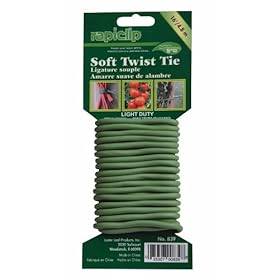So a friend of mine picking up a chameleon on a whim decided he doesnt want it ,, me being a relstively experienced herp keeper, has been called upon to adopt it.
My problem is i know lil about chameleon habits problems etc, etc,
im not even sure on the exact species of the thing.
i have in my collection now a boa, ball python, australian water python and a small clutch of scorpions,
which is nowhere near as tasking as a chameleon.
the scientific name of the species or so im told is ''bradypodion deremensis'' my friend told me it was sold to him as a three horned usabara
So thats said where do we go from here.
iI have the animal in a 4 foot high, screen inclusure which rests on the floor he has ample reptivines heavily fooliaged and has spots where he can be hidden or exposed if he wishes,
im using areptiglo 5.0 uvb flaurescent tube covering the entire length of the flexarium,Also a heat lamp 75w sun glow for a basking spot.
i turn all lights off at night only because my friend said the guy from the petstore told him too.
ive been mist watering 3 to 4 times a day and watch him drink before i leave
I have crickets running rampant in his home but i have yet to see him eat.
Mainly what i am asking is HELP! i have little idea of what i am doing any info would be a godsend.
I need someone to hold my hand in this,
i have to priorities first,priorty identify the chameleon and its care needs then work through the rest as it comes up.
So if anyone can identify'' bradypodion deremensis' as sold as usabara three horned chameleon and send me ANY info
Much thanks ill be posting a pic tomorrow to make things easier tytyty
My problem is i know lil about chameleon habits problems etc, etc,
im not even sure on the exact species of the thing.
i have in my collection now a boa, ball python, australian water python and a small clutch of scorpions,
which is nowhere near as tasking as a chameleon.
the scientific name of the species or so im told is ''bradypodion deremensis'' my friend told me it was sold to him as a three horned usabara
So thats said where do we go from here.
iI have the animal in a 4 foot high, screen inclusure which rests on the floor he has ample reptivines heavily fooliaged and has spots where he can be hidden or exposed if he wishes,
im using areptiglo 5.0 uvb flaurescent tube covering the entire length of the flexarium,Also a heat lamp 75w sun glow for a basking spot.
i turn all lights off at night only because my friend said the guy from the petstore told him too.
ive been mist watering 3 to 4 times a day and watch him drink before i leave
I have crickets running rampant in his home but i have yet to see him eat.
Mainly what i am asking is HELP! i have little idea of what i am doing any info would be a godsend.
I need someone to hold my hand in this,
i have to priorities first,priorty identify the chameleon and its care needs then work through the rest as it comes up.
So if anyone can identify'' bradypodion deremensis' as sold as usabara three horned chameleon and send me ANY info
Much thanks ill be posting a pic tomorrow to make things easier tytyty





